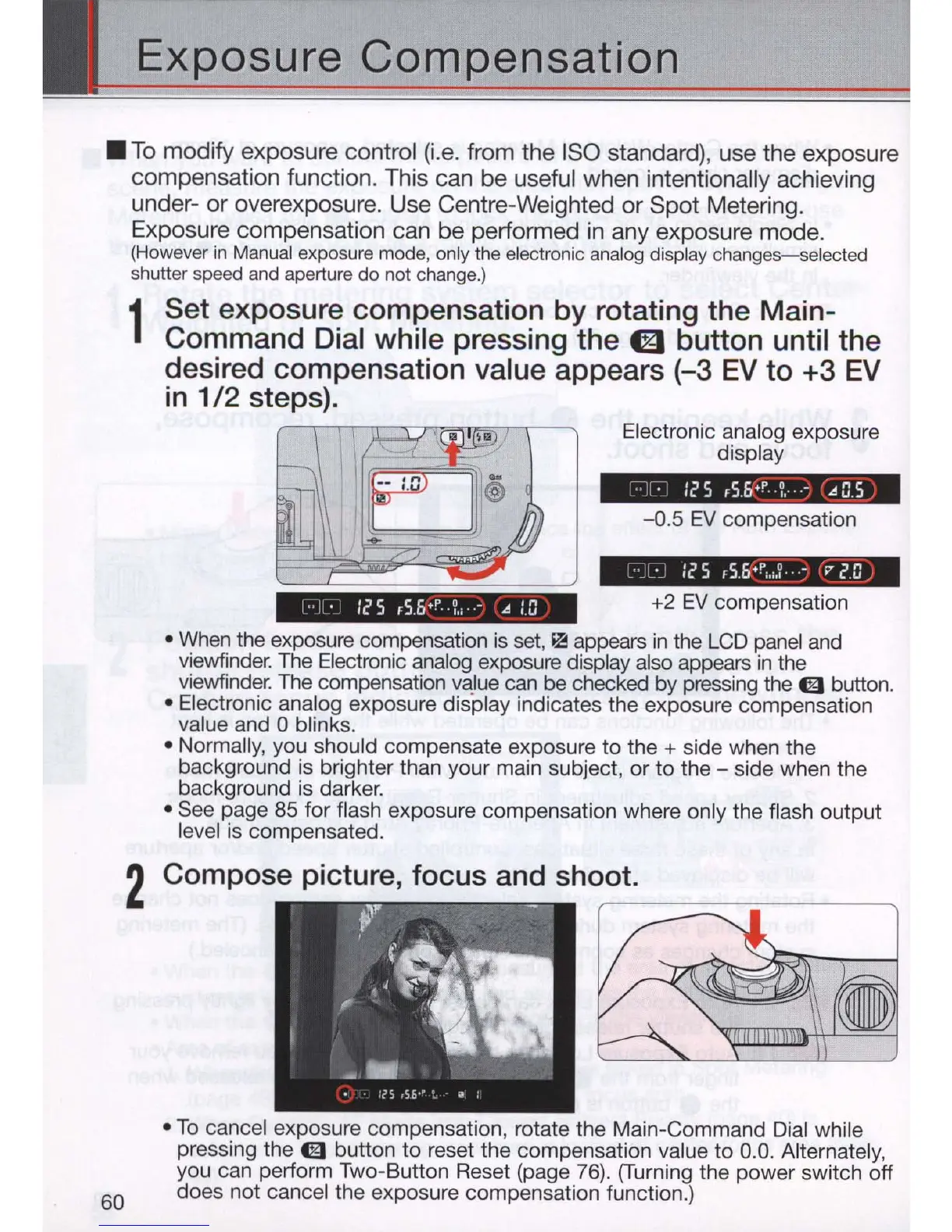Exposure Compensation
•
To
modify exposure control
(i.e.
from the
ISO
standard), use the exposure
compensation function. This can be useful when intentionally achieving
under- or overexposure. Use Centre-Weighted or Spot Metering.
Exposure compensation can be performed
in
any exposure mode.
(However
in
Manu
al
exposure mod
e,
o
nl
y the electro
ni
c analog d
is
play ch
anges-se
lected
shutter speed and aperture
do
not change.)
60
1
Set exposure compensation by rotating the Main-
Command Dial while pressing the
m button until the
desired compensation value appears
(-3
EV
to +3
EV
in
1/2
steps).
Electronic analog exposure
display
.
Ie'
5 ,55'P
1,
-
...
G 5
-0
.5
EV
compensation
.
1e'5
,55'P",,
1 -
.,.
e'G
+2
EV
compensation
• When the exposure compensation is set, ~ appears
in
the LCD panel and
viewfinder. The Electronic analog exposure display also appears
in
the
viewfind
er.
The compensation
vC3:lue
can
be
checked
by
pressing the 0 button .
• Electronic
analog
ex
posure
displa
y i
ndicates
the
ex
posure
c
ompensation
value
and
a
blinks
.
• Normally, you
should
compensate
ex
posure
to
the
+
side
when
the
background
is
brighte
r
than
your
main
subj
e
ct
,
or
to
the
-
side
when
the
background
is
darker
.
• See
page
85
for
flash
exposure
compensation
where
only
the
flash
output
level is
compensated
.
2 Compose picture, focus and
ShO
,o_t_.
___
-=--
___
--..
•
To
cancel
ex
posure
compensation,
rotate
the
Main-Command
Dial while
pressing
the
0
button
to
reset
the
compensation
value
to
0.
0,
Alternately,
you
can
perform
Two-Button
Reset (page 76), {Turning
the
power
switch
off
does
not
cancel
the
ex
posure
compensation
function
.)

